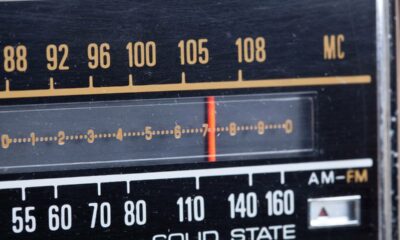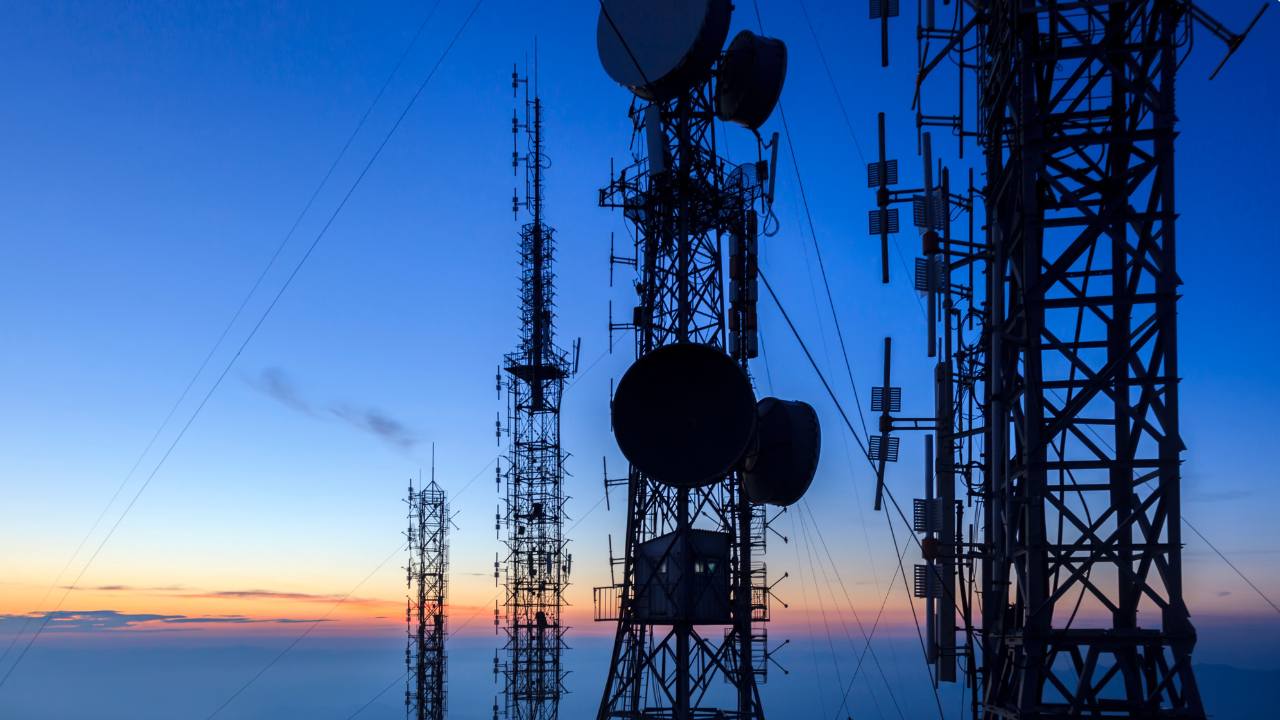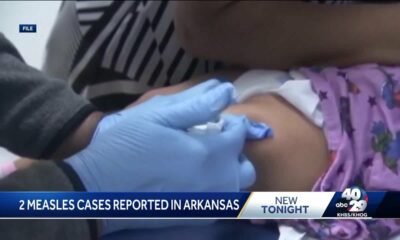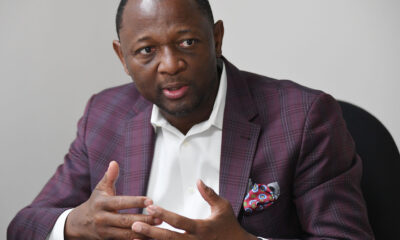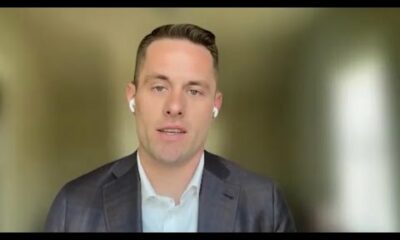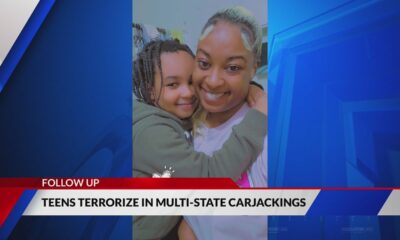Kaiser Health News
Patients With Narcolepsy Face a Dual Nightmare of Medication Shortages and Stigma

Lauren Peace, Tampa Bay Times
Wed, 03 Jan 2024 10:00:00 +0000
Nina Shand couldn’t stay awake.
She had taken afternoon naps since she was a teenager to accommodate her “work hard, play hard” attitude, but when she was in her mid-20s the sleepiness became more severe.
Menial computer tasks put her to sleep, and a 20-minute drive across her city, St. Petersburg, Florida, brought on a drowsiness so intense that her eyelids would flutter, forcing her to pull over. She knew something was really wrong when she no longer felt safe behind the wheel.
In 2021, she received a diagnosis: narcolepsy, a rare disorder that causes excessive daytime sleepiness.
Her doctor prescribed her Adderall, the brand-name version of the amphetamine-powered medication commonly known for treating attention-deficit/hyperactivity disorder.
It worked. For the first time in years, Shand, now 28, felt energized. She was no longer struggling at work, sneaking naps, or downing coffees to trick her body into staying awake. She felt hope.
But by 2022, a national Adderall shortage meant pharmacies were no longer able to fill her prescription. Shand and countless others across the country were being turned away, left to piece together a new — and often less effective — treatment plan with doctors scrambling to meet their needs.
More than a year later, the shortage continues. In October, Democrats in the U.S. House of Representatives implored the FDA and Drug Enforcement Administration to work with drug manufacturers to ensure better supply.
“We cannot allow this to be the continuing reality for Americans,” read their letter, led by Rep. Abigail Spanberger (D-Va.).
But for now, it is.
Each month is accompanied by familiar anxieties as patients navigate a web of messy logistics and uncertainty while trying to get the medication they need to live normally.
Media coverage of the shortage — and even the House Democrats’ letter — has focused primarily on the harms to people with ADHD. But for those with sleep disorders, like Shand, the effects may be even more consequential.
Basic tasks — like driving — become dangerous or impossible without medication. Job and school performances are threatened by the onset of sudden sleep and sometimes even paralysis. Hobbies and social lives can fall by the wayside, too.
“Adderall gave me my life back,” said Shand. “Going from having a medication to not, it’s like a roller coaster you desperately want to get off.”
The resulting challenges, she said, have made particularly clear the loneliness of living with a rare and misunderstood disorder.
What Is Narcolepsy?
An estimated 1 in 2,000 people in the United States live with narcolepsy — more than 160,000 people nationwide. The disorder is part of a broader group known as hypersomnolence disorders, or conditions characterized by difficulty staying awake during the day.
There are two major types of narcolepsy.
Both types affect one’s ability to stay awake, but Type 2 is typically less severe. In addition to sleep disturbance, most people with Type 1 narcolepsy experience sudden, temporary loss of muscle control or paralysis, called cataplexy.
Cataplexy attacks are typically triggered by emotion — like laughter or surprise. For one person living with narcolepsy, an attack might look like a slack jaw or limp hand. For another, it could trigger full-body paralysis.
Causes of Type 1 narcolepsy can include autoimmune disorders and brain injuries, but the underlying issue is believed to be low levels of hypocretin, a hormone that is thought to affect REM sleep — the dream state.
“Narcolepsy is due to a faulty switch in the brain for REM sleep,” said Muhammad Ali Syed, a physician and the medical director of the University of Florida Health Sleep Center.
People with narcolepsy go into REM extremely quickly, Syed said. A person without a sleep disorder will enter REM around an hour or 90 minutes after falling asleep. But a person with narcolepsy may go into REM almost immediately and could have a fully fleshed-out dream in just minutes, Syed said.
In some circumstances, symptoms can also include sleep paralysis and hallucinations.
Increased Demand
Every week since the Adderall shortage began, Fareeha Hussaini, a sleep medicine specialist at University of South Florida Health, has had calls to her office from patients struggling to access their medication.
College students are worried about plummeting grades and final exams. Patients in their 70s, who have managed symptoms with Adderall for decades, are now forced to switch to other medications, like Ritalin.
Hussaini and her staff at USF Health have worked to help patients adjust treatment plans, but there’s no denying the added stress. Some patients worry what a new plan may mean for their quality of life as shortages continue.
Drug shortages in the U.S. aren’t new, but the past couple of years have brought an all-time high, said Michael Ganio, who directs pharmacy practice and quality for the American Society of Health-System Pharmacists, which represents pharmacists nationwide.
The Adderall shortage, Ganio said, is linked to increased demand.
The covid-19 pandemic brought on a flood of new ADHD diagnoses. Studies have found absence of routine and increased screen time may have played a role. With those diagnoses came an increase in stimulant prescriptions, Ganio said — often via telehealth.
Adderall is a Schedule II controlled substance. It’s highly regulated because of the potential for being diverted for recreational use. Prior to the pandemic, patients were required to have an in-person doctor appointment to get a prescription. But that requirement was waived during the public health emergency, and telehealth appointments were allowed. The telehealth allowance has since been extended.
“There’s a broad group of patients who never had access, or suddenly have easier access, to providers who can make that diagnosis and prescribe,” Ganio said.
Another reason for the shortage are production limitations put in place by the DEA. Each drug manufacturer is effectively given quotas of how much of the drug they can produce. But because manufacturers are shielded by trade secret protections, it can be hard to know whether the DEA quotas are too low or if the manufacturers just aren’t producing to full capacity.
In a joint letter in August, the leaders of the FDA and DEA called on manufacturers to work together to increase production and confirm they are working to produce up to their quotas.
A Logistical Nightmare
From the parking lot of a Pinellas County, Florida, Walgreens in November, Nadine Dixon, 50, waited anxiously to have her Adderall prescription filled. It was the third time she’d sat in a pharmacy parking lot that day.
For Dixon, who gets her prescription through monthly in-person visits with a neurologist, the past year has been a logistical nightmare. The effects of the shortage, she said, have been compounded by the layers of red tape around Schedule II drugs.
Unlike, say, blood pressure medication — which can be dispensed to patients in a 90-day supply — Dixon can get enough Adderall only for 30 days, and automatic refills are not allowed.
As the end of each month approaches and her pill bottle empties, her anxiety spikes.
At her doctor appointment, she picks up her prescription, commencing a cumbersome routine.
Some months, she has had to drive to upward of 10 pharmacies to find her medication. Sometimes she calls in advance to ask if they have it, but she rarely gets answers.
When she finds a pharmacy that has Adderall, a new challenge hits. Minuscule details — like a number written with numerals instead of being spelled out, or a doctor’s signature that looks slightly different than it did the month before — can result in the pharmacy turning her away. Her only option then is to drive back to the doctor’s office and ask for the paperwork to be adjusted.
Doctors can send electronic prescriptions to a pharmacy to avoid the issues with handwriting, but those pose their own complications: They can be sent to only one pharmacy at a time, and can’t be transferred.
If the receiving pharmacy is out of medication, patients have to go back to their doctor to ask that they send the prescription elsewhere. And often only the doctor — not a nurse, nor a physician assistant, nor a staff member — is allowed to address that call for help.
Luis Enrique Ortiz, a sleep medicine specialist at Johns Hopkins All Children’s Hospital, said that’s put a strain on doctors, who are juggling efforts to rewrite prescriptions, guide patients, and handle appointments and research.
The result is often a delayed response.
“It can be really nerve-wracking,” Ortiz said. “Their time is running out, and they need this medication to function normally. When they finally do get it, they don’t know what the next month will hold. They have to go through it all again.”
Dixon, who was diagnosed with narcolepsy with cataplexy in 2010, estimated she’s spent up to eight hours a month trying to get her medication since the shortages began. In three of the past six months, her prescription hasn’t been filled on time. She’s experienced delays of four or five days.
The results are terrible migraines, mood swings, muscle weakness, and — of course — sudden sleep, she said.
“It feels like you’ve been awake for four days straight and are trying to keep your eyes open,” Dixon said. “The second I sit down, I fall asleep.”
Dixon described herself as an energetic person when she’s on medication. She’s a single mom and a caregiver for an older woman, and she works an online job for extra money. She has a full social life, too.
But without medication, she said, her life comes to a standstill. She can’t go have drinks with friends. She can’t go for walks. Simple conversations about stressful topics can trigger cataplexy attacks, which cause her limbs to go numb.
“It’s really horrible,” Dixon said. “Irregularities with the medication are hard on your body.”
Almost an hour after she arrived at the pharmacy that November day, she got a phone call asking her to come in from where she’d been waiting in the parking lot. They couldn’t fill her prescription, the pharmacist told her. The prescription had an error.
They sent her away with a sticky note spelling out the necessary adjustments.
She drove back to her doctor’s office, but when she got there, she learned the doctor had left for the day.
She would have to try again the next day.
Stigma and Hope
Adderall isn’t the only treatment used for narcolepsy. Other stimulants, as well as newer drugs made specifically for treating sleep disorders, can help, but those can come with hefty price tags and insurance battles.
And when a patient finds a drug that works, any change can be scary, Shand said.
Since her diagnosis, Shand said, she’s tried at least three other treatments.
“Adderall has been the only stimulant that really keeps me awake and feeling like I can go through my entire day without having to sleep,” she said.
She’s been able to get her prescription refilled since fall began, she said, but she’s learned not to get comfortable. She never knows what the next month will hold — what stock local pharmacies will have available.
For Shand, who has narcolepsy with cataplexy, the years since her diagnosis have brought waves of frustration and grief but also a sense of loneliness.
In television and movies, narcoleptics are often the butt of a joke, she said. Most people, she’s found, don’t really know what narcolepsy is.
“It’s not actually all that funny,” Shand said. “It’s genuinely debilitating. It’s life-altering.”
This article was produced in partnership with the Tampa Bay Times.
——————————
By: Lauren Peace, Tampa Bay Times
Title: Patients With Narcolepsy Face a Dual Nightmare of Medication Shortages and Stigma
Sourced From: kffhealthnews.org/news/article/narcolepsy-stigma-medication-shortage-adderall-controlled-substance/
Published Date: Wed, 03 Jan 2024 10:00:00 +0000
Did you miss our previous article…
https://www.biloxinewsevents.com/california-is-poised-to-protect-workers-from-extreme-heat-indoors/
Kaiser Health News
US Judge Names Receiver To Take Over California Prisons’ Mental Health Program

SACRAMENTO, Calif. — A judge has initiated a federal court takeover of California’s troubled prison mental health system by naming the former head of the Federal Bureau of Prisons to serve as receiver, giving her four months to craft a plan to provide adequate care for tens of thousands of prisoners with serious mental illness.
Senior U.S. District Judge Kimberly Mueller issued her order March 19, identifying Colette Peters as the nominated receiver. Peters, who was Oregon’s first female corrections director and known as a reformer, ran the scandal-plagued federal prison system for 30 months until President Donald Trump took office in January. During her tenure, she closed a women’s prison in Dublin, east of Oakland, that had become known as the “rape club.”
Michael Bien, who represents prisoners with mental illness in the long-running prison lawsuit, said Peters is a good choice. Bien said Peters’ time in Oregon and Washington, D.C., showed that she “kind of buys into the fact that there are things we can do better in the American system.”
“We took strong objection to many things that happened under her tenure at the BOP, but I do think that this is a different job and she’s capable of doing it,” said Bien, whose firm also represents women who were housed at the shuttered federal women’s prison.
California corrections officials called Peters “highly qualified” in a statement, while Gov. Gavin Newsom’s office did not immediately comment. Mueller gave the parties until March 28 to show cause why Peters should not be appointed.
Peters is not talking to the media at this time, Bien said. The judge said Peters is to be paid $400,000 a year, prorated for the four-month period.
About 34,000 people incarcerated in California prisons have been diagnosed with serious mental illnesses, representing more than a third of California’s prison population, who face harm because of the state’s noncompliance, Mueller said.
Appointing a receiver is a rare step taken when federal judges feel they have exhausted other options. A receiver took control of Alabama’s correctional system in 1976, and they have otherwise been used to govern prisons and jails only about a dozen times, mostly to combat poor conditions caused by overcrowding. Attorneys representing inmates in Arizona have asked a judge to take over prison health care there.
Mueller’s appointment of a receiver comes nearly 20 years after a different federal judge seized control of California’s prison medical system and installed a receiver, currently J. Clark Kelso, with broad powers to hire, fire, and spend the state’s money.
California officials initially said in August that they would not oppose a receivership for the mental health program provided that the receiver was also Kelso, saying then that federal control “has successfully transformed medical care” in California prisons. But Kelso withdrew from consideration in September, as did two subsequent candidates. Kelso said he could not act “zealously and with fidelity as receiver in both cases.”
Both cases have been running for so long that they are now overseen by a second generation of judges. The original federal judges, in a legal battle that reached the U.S. Supreme Court, more than a decade ago forced California to significantly reduce prison crowding in a bid to improve medical and mental health care for incarcerated people.
State officials in court filings defended their improvements over the decades. Prisoners’ attorneys countered that treatment remains poor, as evidenced in part by the system’s record-high suicide rate, topping 31 suicides per 100,000 prisoners, nearly double that in federal prisons.
“More than a quarter of the 30 class-members who died by suicide in 2023 received inadequate care because of understaffing,” prisoners’ attorneys wrote in January, citing the prison system’s own analysis. One prisoner did not receive mental health appointments for seven months “before he hanged himself with a bedsheet.”
They argued that the November passage of a ballot measure increasing criminal penalties for some drug and theft crimes is likely to increase the prison population and worsen staffing shortages.
California officials argued in January that Mueller isn’t legally justified in appointing a receiver because “progress has been slow at times but it has not stalled.”
Mueller has countered that she had no choice but to appoint an outside professional to run the prisons’ mental health program, given officials’ intransigence even after she held top officials in contempt of court and levied fines topping $110 million in June. Those extreme actions, she said, only triggered more delays.
The 9th U.S. Circuit Court of Appeals on March 19 upheld Mueller’s contempt ruling but said she didn’t sufficiently justify calculating the fines by doubling the state’s monthly salary savings from understaffing prisons. It upheld the fines to the extent that they reflect the state’s actual salary savings but sent the case back to Mueller to justify any higher penalty.
Mueller had been set to begin additional civil contempt proceedings against state officials for their failure to meet two other court requirements: adequately staffing the prison system’s psychiatric inpatient program and improving suicide prevention measures. Those could bring additional fines topping tens of millions of dollars.
But she said her initial contempt order has not had the intended effect of compelling compliance. Mueller wrote as far back as July that additional contempt rulings would also be likely to be ineffective as state officials continued to appeal and seek delays, leading “to even more unending litigation, litigation, litigation.”
She went on to foreshadow her latest order naming a receiver in a preliminary order: “There is one step the court has taken great pains to avoid. But at this point,” Mueller wrote, “the court concludes the only way to achieve full compliance in this action is for the court to appoint its own receiver.”
This article was produced by KFF Health News, which publishes California Healthline, an editorially independent service of the California Health Care Foundation.
If you or someone you know may be experiencing a mental health crisis, contact the 988 Suicide & Crisis Lifeline by dialing or texting “988.”
The post US Judge Names Receiver To Take Over California Prisons’ Mental Health Program appeared first on kffhealthnews.org
Kaiser Health News
Amid Plummeting Diversity at Medical Schools, a Warning of DEI Crackdown’s ‘Chilling Effect’

The Trump administration’s crackdown on DEI programs could exacerbate an unexpectedly steep drop in diversity among medical school students, even in states like California, where public universities have been navigating bans on affirmative action for decades. Education and health experts warn that, ultimately, this could harm patient care.
Since taking office, President Donald Trump has issued a handful of executive orders aimed at terminating all diversity, equity, and inclusion, or DEI, initiatives in federally funded programs. And in his March 4 address to Congress, he described the Supreme Court’s 2023 decision banning the consideration of race in college and university admissions as “brave and very powerful.”
Last month, the Education Department’s Office for Civil Rights — which lost about 50% of its staff in mid-March — directed schools, including postsecondary institutions, to end race-based programs or risk losing federal funding. The “Dear Colleague” letter cited the Supreme Court’s decision.
Paulette Granberry Russell, president and CEO of the National Association of Diversity Officers in Higher Education, said that “every utterance of ‘diversity’ is now being viewed as a violation or considered unlawful or illegal.” Her organization filed a lawsuit challenging Trump’s anti-DEI executive orders.
While California and eight other states — Arizona, Florida, Idaho, Michigan, Nebraska, New Hampshire, Oklahoma, and Washington — had already implemented bans of varying degrees on race-based admissions policies well before the Supreme Court decision, schools bolstered diversity in their ranks with equity initiatives such as targeted scholarships, trainings, and recruitment programs.
But the court’s decision and the subsequent state-level backlash — 29 states have since introduced bills to curb diversity initiatives, according to data published by the Chronicle of Higher Education — have tamped down these efforts and led to the recent declines in diversity numbers, education experts said.
After the Supreme Court’s ruling, the numbers of Black and Hispanic medical school enrollees fell by double-digit percentages in the 2024-25 school year compared with the previous year, according to the Association of American Medical Colleges. Black enrollees declined 11.6%, while the number of new students of Hispanic origin fell 10.8%. The decline in enrollment of American Indian or Alaska Native students was even more dramatic, at 22.1%. New Native Hawaiian or other Pacific Islander enrollment declined 4.3%.
“We knew this would happen,” said Norma Poll-Hunter, AAMC’s senior director of workforce diversity. “But it was double digits — much larger than what we anticipated.”
The fear among educators is the numbers will decline even more under the new administration.
At the end of February, the Education Department launched an online portal encouraging people to “report illegal discriminatory practices at institutions of learning,” stating that students should have “learning free of divisive ideologies and indoctrination.” The agency later issued a “Frequently Asked Questions” document about its new policies, clarifying that it was acceptable to observe events like Black History Month but warning schools that they “must consider whether any school programming discourages members of all races from attending.”
“It definitely has a chilling effect,” Poll-Hunter said. “There is a lot of fear that could cause institutions to limit their efforts.”
Numerous requests for comment from medical schools about the impact of the anti-DEI actions went unreturned. University presidents are staying mum on the issue to protect their institutions, according to reporting from The New York Times.
Utibe Essien, a physician and UCLA assistant professor, said he has heard from some students who fear they won’t be considered for admission under the new policies. Essien, who co-authored a study on the effect of affirmative action bans on medical schools, also said students are worried medical schools will not be as supportive toward students of color as in the past.
“Both of these fears have the risk of limiting the options of schools folks apply to and potentially those who consider medicine as an option at all,” Essien said, adding that the “lawsuits around equity policies and just the climate of anti-diversity have brought institutions to this place where they feel uncomfortable.”
In early February, the Pacific Legal Foundation filed a lawsuit against the University of California-San Francisco’s Benioff Children’s Hospital Oakland over an internship program designed to introduce “underrepresented minority high school students to health professions.”
Attorney Andrew Quinio filed the suit, which argues that its plaintiff, a white teenager, was not accepted to the program after disclosing in an interview that she identified as white.
“From a legal standpoint, the issue that comes about from all this is: How do you choose diversity without running afoul of the Constitution?” Quinio said. “For those who want diversity as a goal, it cannot be a goal that is achieved with discrimination.”
UC Health spokesperson Heather Harper declined to comment on the suit on behalf of the hospital system.
Another lawsuit filed in February accuses the University of California of favoring Black and Latino students over Asian American and white applicants in its undergraduate admissions. Specifically, the complaint states that UC officials pushed campuses to use a “holistic” approach to admissions and “move away from objective criteria towards more subjective assessments of the overall appeal of individual candidates.”
The scrutiny of that approach to admissions could threaten diversity at the UC-Davis School of Medicine, which for years has employed a “race-neutral, holistic admissions model” that reportedly tripled enrollment of Black, Latino, and Native American students.
“How do you define diversity? Does it now include the way we consider how someone’s lived experience may be influenced by how they grew up? The type of school, the income of their family? All of those are diversity,” said Granberry Russell, of the National Association of Diversity Officers in Higher Education. “What might they view as an unlawful proxy for diversity equity and inclusion? That’s what we’re confronted with.”
California Attorney General Rob Bonta, a Democrat, recently joined other state attorneys general to issue guidance urging that schools continue their DEI programs despite the federal messaging, saying that legal precedent allows for the activities. California is also among several states suing the administration over its deep cuts to the Education Department.
If the recent decline in diversity among newly enrolled students holds or gets worse, it could have long-term consequences for patient care, academic experts said, pointing toward the vast racial disparities in health outcomes in the U.S., particularly for Black people.
A higher proportion of Black primary care doctors is associated with longer life expectancy and lower mortality rates among Black people, according to a 2023 study published by the JAMA Network.
Physicians of color are also more likely to build their careers in medically underserved communities, studies have shown, which is increasingly important as the AAMC projects a shortage of up to 40,400 primary care doctors by 2036.
“The physician shortage persists, and it’s dire in rural communities,” Poll-Hunter said. “We know that diversity efforts are really about improving access for everyone. More diversity leads to greater access to care — everyone is benefiting from it.”
This article was produced by KFF Health News, which publishes California Healthline, an editorially independent service of the California Health Care Foundation.
The post Amid Plummeting Diversity at Medical Schools, a Warning of DEI Crackdown’s ‘Chilling Effect’ appeared first on kffhealthnews.org
Kaiser Health News
Tribal Health Leaders Say Medicaid Cuts Would Decimate Health Programs

As Congress mulls potentially massive cuts to federal Medicaid funding, health centers that serve Native American communities, such as the Oneida Community Health Center near Green Bay, Wisconsin, are bracing for catastrophe.
That’s because more than 40% of the about 15,000 patients the center serves are enrolled in Medicaid. Cuts to the program would be detrimental to those patients and the facility, said Debra Danforth, the director of the Oneida Comprehensive Health Division and a citizen of the Oneida Nation.
“It would be a tremendous hit,” she said.
The facility provides a range of services to most of the Oneida Nation’s 17,000 people, including ambulatory care, internal medicine, family practice, and obstetrics. The tribe is one of two in Wisconsin that have an “open-door policy,” Danforth said, which means that the facility is open to members of any federally recognized tribe.
But Danforth and many other tribal health officials say Medicaid cuts would cause service reductions at health facilities that serve Native Americans.
Indian Country has a unique relationship to Medicaid, because the program helps tribes cover chronic funding shortfalls from the Indian Health Service, the federal agency responsible for providing health care to Native Americans.
Medicaid has accounted for about two-thirds of third-party revenue for tribal health providers, creating financial stability and helping facilities pay operational costs. More than a million Native Americans enrolled in Medicaid or the closely related Children’s Health Insurance Program also rely on the insurance to pay for care outside of tribal health facilities without going into significant medical debt. Tribal leaders are calling on Congress to exempt tribes from cuts and are preparing to fight to preserve their access.
“Medicaid is one of the ways in which the federal government meets its trust and treaty obligations to provide health care to us,” said Liz Malerba, director of policy and legislative affairs for the United South and Eastern Tribes Sovereignty Protection Fund, a nonprofit policy advocacy organization for 33 tribes spanning from Texas to Maine. Malerba is a citizen of the Mohegan Tribe.
“So we view any disruption or cut to Medicaid as an abrogation of that responsibility,” she said.
Tribes face an arduous task in providing care to a population that experiences severe health disparities, a high incidence of chronic illness, and, at least in western states, a life expectancy of 64 years — the lowest of any demographic group in the U.S. Yet, in recent years, some tribes have expanded access to care for their communities by adding health services and providers, enabled in part by Medicaid reimbursements.
During the last two fiscal years, five urban Indian organizations in Montana saw funding growth of nearly $3 million, said Lisa James, director of development for the Montana Consortium for Urban Indian Health, during a webinar in February organized by the Georgetown University Center for Children and Families and the National Council of Urban Indian Health.
The increased revenue was “instrumental,” James said, allowing clinics in the state to add services that previously had not been available unless referred out for, including behavioral health services. Clinics were also able to expand operating hours and staffing.
Montana’s five urban Indian clinics, in Missoula, Helena, Butte, Great Falls, and Billings, serve 30,000 people, including some who are not Native American or enrolled in a tribe. The clinics provide a wide range of services, including primary care, dental care, disease prevention, health education, and substance use prevention.
James said Medicaid cuts would require Montana’s urban Indian health organizations to cut services and limit their ability to address health disparities.
American Indian and Alaska Native people under age 65 are more likely to be uninsured than white people under 65, but 30% rely on Medicaid compared with 15% of their white counterparts, according to KFF data for 2017 to 2021. More than 40% of American Indian and Alaska Native children are enrolled in Medicaid or CHIP, which provides health insurance to kids whose families are not eligible for Medicaid. KFF is a health information nonprofit that includes KFF Health News.
A Georgetown Center for Children and Families report from January found the share of residents enrolled in Medicaid was higher in counties with a significant Native American presence. The proportion on Medicaid in small-town or rural counties that are mostly within tribal statistical areas, tribal subdivisions, reservations, and other Native-designated lands was 28.7%, compared with 22.7% in other small-town or rural counties. About 50% of children in those Native areas were enrolled in Medicaid.
The federal government has already exempted tribes from some of Trump’s executive orders. In late February, Department of Health and Human Services acting general counsel Sean Keveney clarified that tribal health programs would not be affected by an executive order that diversity, equity, and inclusion government programs be terminated, but that the Indian Health Service is expected to discontinue diversity and inclusion hiring efforts established under an Obama-era rule.
HHS Secretary Robert F. Kennedy Jr. also rescinded the layoffs of more than 900 IHS employees in February just hours after they’d received termination notices. During Kennedy’s Senate confirmation hearings, he said he would appoint a Native American as an assistant HHS secretary. The National Indian Health Board, a Washington, D.C.-based nonprofit that advocates for tribes, in December endorsed elevating the director of the Indian Health Service to assistant secretary of HHS.
Jessica Schubel, a senior health care official in Joe Biden’s White House, said exemptions won’t be enough.
“Just because Native Americans are exempt doesn’t mean that they won’t feel the impact of cuts that are made throughout the rest of the program,” she said.
State leaders are also calling for federal Medicaid spending to be spared because cuts to the program would shift costs onto their budgets. Without sustained federal funding, which can cover more than 70% of costs, state lawmakers face decisions such as whether to change eligibility requirements to slim Medicaid rolls, which could cause some Native Americans to lose their health coverage.
Tribal leaders noted that state governments do not have the same responsibility to them as the federal government, yet they face large variations in how they interact with Medicaid depending on their state programs.
President Donald Trump has made seemingly conflicting statements about Medicaid cuts, saying in an interview on Fox News in February that Medicaid and Medicare wouldn’t be touched. In a social media post the same week, Trump expressed strong support for a House budget resolution that would likely require Medicaid cuts.
The budget proposal, which the House approved in late February, requires lawmakers to cut spending to offset tax breaks. The House Committee on Energy and Commerce, which oversees spending on Medicaid and Medicare, is instructed to slash $880 billion over the next decade. The possibility of cuts to the program that, together with CHIP, provides insurance to 79 million people has drawn opposition from national and state organizations.
The federal government reimburses IHS and tribal health facilities 100% of billed costs for American Indian and Alaska Native patients, shielding state budgets from the costs.
Because Medicaid is already a stopgap fix for Native American health programs, tribal leaders said it won’t be a matter of replacing the money but operating with less.
“When you’re talking about somewhere between 30% to 60% of a facility’s budget is made up by Medicaid dollars, that’s a very difficult hole to try and backfill,” said Winn Davis, congressional relations director for the National Indian Health Board.
Congress isn’t required to consult tribes during the budget process, Davis added. Only after changes are made by the Centers for Medicare & Medicaid Services and state agencies are tribes able to engage with them on implementation.
The amount the federal government spends funding the Native American health system is a much smaller portion of its budget than Medicaid. The IHS projected billing Medicaid about $1.3 billion this fiscal year, which represents less than half of 1% of overall federal spending on Medicaid.
“We are saving more lives,” Malerba said of the additional services Medicaid covers in tribal health care. “It brings us closer to a level of 21st century care that we should all have access to but don’t always.”
This article was published with the support of the Journalism & Women Symposium (JAWS) Health Journalism Fellowship, assisted by grants from The Commonwealth Fund.
KFF Health News is a national newsroom that produces in-depth journalism about health issues and is one of the core operating programs at KFF—an independent source of health policy research, polling, and journalism. Learn more about KFF.
USE OUR CONTENT
This story can be republished for free (details).
The post Tribal Health Leaders Say Medicaid Cuts Would Decimate Health Programs appeared first on kffhealthnews.org
-

 News from the South - Arkansas News Feed6 days ago
News from the South - Arkansas News Feed6 days agoMeasles cases confirmed in Arkansas children after travel exposure
-

 Mississippi Today6 days ago
Mississippi Today6 days agoA self-proclaimed ‘loose electron’ journeys through Jackson’s political class
-

 News from the South - Alabama News Feed6 days ago
News from the South - Alabama News Feed6 days agoImpacts of Overdraft Fees | April 11, 2025 | News 19 at 10 p.m.
-

 News from the South - Alabama News Feed7 days ago
News from the South - Alabama News Feed7 days agoPilot Speaks on Helicopter Crash | April 10, 2025 | News 19 at 10 p.m.
-

 News from the South - Georgia News Feed6 days ago
News from the South - Georgia News Feed6 days ago1-on-1 with Gov. Kemp’s Senior Advisor | Full interview
-

 News from the South - Missouri News Feed6 days ago
News from the South - Missouri News Feed6 days agoMom and son targeted in carjackings, stolen cars crime spree
-

 Mississippi Today5 days ago
Mississippi Today5 days agoOn this day in 1873, La. courthouse scene of racial carnage
-

 Local News5 days ago
Local News5 days agoAG Fitch and Children’s Advocacy Centers of Mississippi Announce Statewide Protocol for Child Abuse Response





